The MCU Is in Big Trouble — Can These Modest Ideas Help the Massive Franchise Get Back on Track?
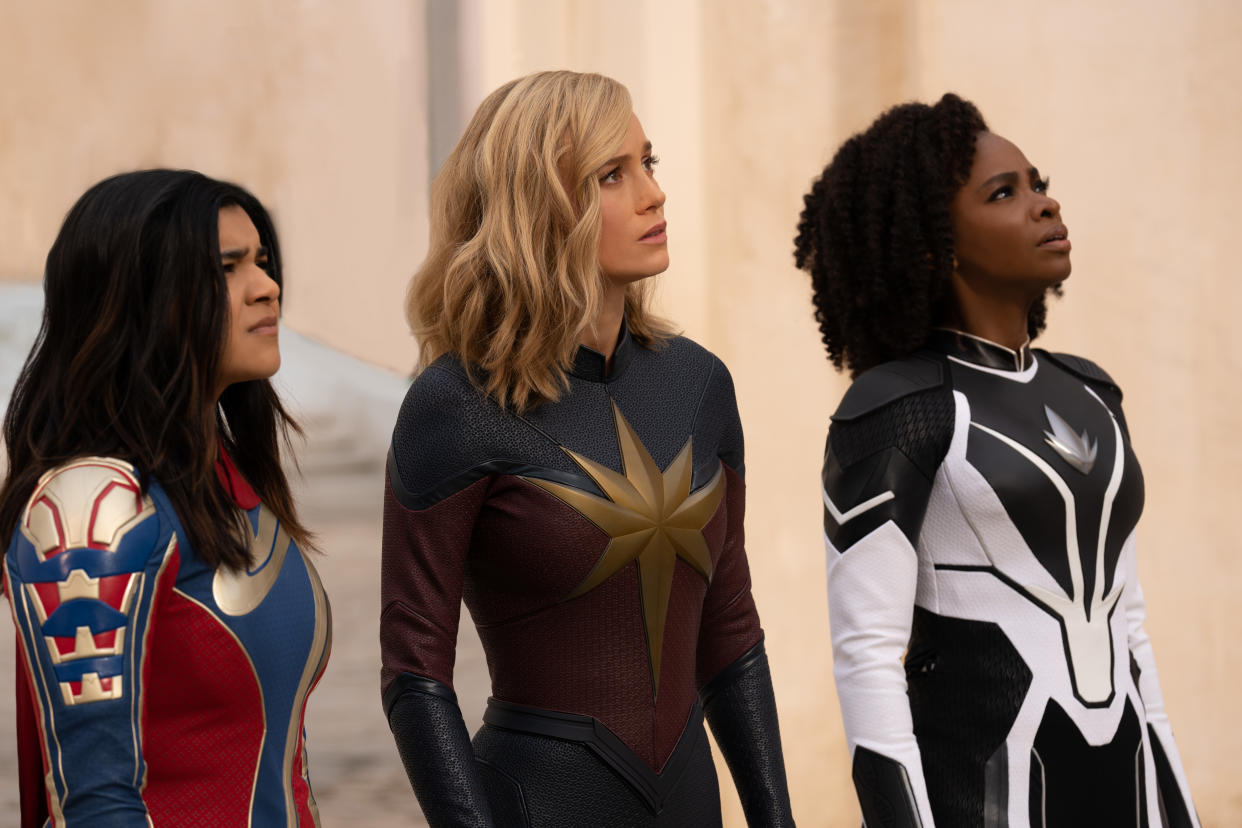
[Editor’s note: The following article contains spoilers for the wider Marvel Cinematic Universe, plus “The Marvels” and its post-credits scene.]
It was a bad weekend at the box office — certainly not a “marvels-ous” one — as the latest Marvel Cinematic Universe, Nia DaCosta’s “The Marvels,” arrived in theaters and promptly walked away with a dismal $47 million domestic, $110 million worldwide opening (and a reported $220 million budget, before marketing costs), the worst opening for an MCU film ever. Also not helping: a B CinemaScore, which places the film in the bottom tier of MCU films by that metric as well (only two other MCU films have received that same grade: “Eternals” and “Ant-Man and the Wasp: Quantumania”).
More from IndieWire
Pedro Pascal in Talks to Play Reed Richards in 'Fantastic Four' Reboot
Ottessa Moshfegh Says 'My Year of Rest and Relaxation' Film Adaptation Is 'Still Underway'
It’s unfortunate that DaCosta’s film — directed by a woman of color, featuring a female-centric story with a “diverse” cast of superheroes, and finding its best beats in humor and heart — will become inextricably linked with the “fall” of the MCU, because this kind of box office bust has long seemed inevitable for the ailing franchise. A certain amount of retooling is clearly in the offing, thanks to a series of reveals within “The Marvels” that attempt to set up the next chapter of the Marvel world, plus a released calendar already in flux, but we’ve got some ideas for big, fast, necessary fixes right now.
Ahead, six IndieWire staffers — all of them reasonably knowledgeable when it comes to the MCU (as the current entertainment journalism landscape demands) and of varying “fan” levels — offer their ideas for the most immediate, presumably obvious fixes to get the behemoth franchise back on track.
KATE ERBLAND: As I fearlessly (insanely?) noted in the opening of my review of “The Marvels,” despite dedicating entire days of my life to the watching of various Marvel Cinematic Universe films and television shows (and short films and post-credit scenes, etc. etc.), I still spent the majority of this most recent screening feeling unmoored by both major plot points and smaller touches. That doesn’t seem right, does it? Listen, the MCU’s overall plan to plot out this giant, overarching, and entangled (in the words of “The Marvels”!) franchise is impressive. It’s ambitious! And it’s not working.
Watching movies and shows is literally my job, and even I cannot keep up with all the various Marvel properties on screens both large and small. It seems totally bizarre to me that I can walk into a theater, hours and hours of Marvel content under my brain belt, and still feel as if I don’t understand the stakes of a story, the characters who populate it, and what it all means for this larger, ailing universe. Weaving together the films and the shows to serve the story of the plot that concluded with “Avengers: Endgame” was smart, successful, and proof that this could all work.
But these days, with the nagging sense that Marvel brass aren’t driving toward something with the same clarity they did with Phase Three (although, cough cough, the post-credits scene of “The Marvels” does imply they’ve got one, long-gestating, long-desired concept coming in hot to tie these disparate threads together), my most immediate demand is thus: Marvel needs to de-couple the shows from the films. You should not have to see every piece of Marvel content to even have a hope of understanding what is happening in an individual show or film. And it seems that Marvel, or at least some people at Marvel, are getting that idea: upcoming Disney+ and Hulu series “Echo” is not only rated TV-MA (a first for the franchise), but it is also the first series to debut under the Marvel Spotlight banner, which is designed for an audience that “doesn’t need to have seen other Marvel series to understand what’s happening in [the] story.” Is it weird that has me more excited for this series than had it been tied inextricably to the rest of the franchise?
PROMA KHOSLA: I’m with you, Kate — also because historically Marvel projects really shine when they lean into authentic minority stories (“Ms. Marvel,” “Shang-Chi,” “Black Panther,” etc). The “Echo” rating also gives me Netflix’s “Daredevil” vibes, which was an absolute knockout (pun intended!) when it first premiered.
But “The Marvels” offered something that I and so many superhero movie fans have been waiting on for years: The X-Men. Now, this is far from uncharted territory for film or television, but the mutant saga has been untouched by the MCU specifically (except for Quicksilver in “Age of Ultron” — and look how he ended up). Mutants have been creeping up on us for years (I will never recover from Evan Peters’ “WandaVision” cameo), but made their true debut in this film’s stinger.
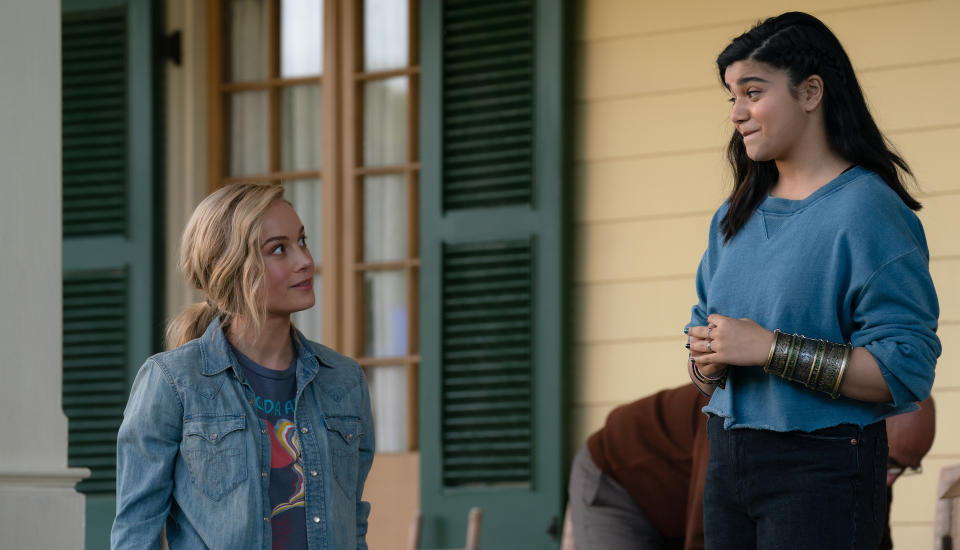
The existing live-action “X-Men” movies had a rough go of it, from the stronger films now marred by allegations against director Bryan Singer to consistently disappointing later efforts like “X-Men: Apocalypse” and “Dark Phoenix.” The franchise needs a strong guiding force and the framework Kevin Feige has in place for the MCU — and now they have it. And the fact that cast members might reprise their roles (Kelsey Grammar doing what only J.K. Simmons had until now) is an extra thrill for longtime fans of this property. Pivoting to X-Men is a win-win for Marvel: It establishes new characters and stories (with the opportunity to reset or completely ignore previous films), and it services existing Marvel Comics and superhero movie fans.
MARCUS JONES: While I agree with Proma that the introduction of the X-Men is an exciting prospect, I believe Marvel Studios needs to cut ties with the Fox films fast. Seeing that version of Beast was a jumpscare on multiple levels (having both read the recent comics featuring the character committing war crimes, and seen Season 1 of “Real Housewives of Beverly Hills.”) But in all seriousness, the one highlight of the most recent phases of the Marvel Cinematic Universe has been the casting.
Credit where credit is due, the Marvel machine was a big factor in establishing Tom Holland and Zendaya as probably the only two Gen Z movie stars that have proven to be bankable — countering the narrative that an MCU role does nothing to boost one’s profile. It helps too that these fresh faces were playing Peter Parker and Mary Jane Watson, the most famous couple in Marvel Comics. Even more green is Iman Vellani as Kamala Khan, a major comics character that was created only 10 years ago, but her lead turn in “Ms. Marvel” showed she’s an instant star.
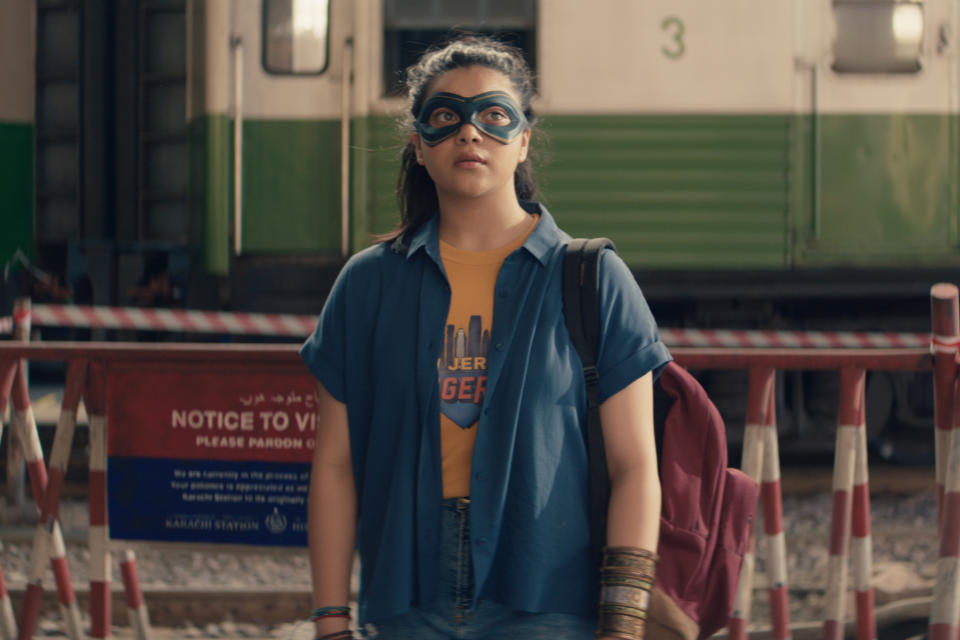
Though MCU fatigue is a very real thing, it is worth noting that the majority of characters that have historically been Marvel Comics’ most popular have yet to be introduced within the Marvel Cinematic Universe. Superheroes like Mr. Fantastic or Storm are Marvel Studios’ aces in the hole, and even casual MCU fans are aware of that. Given the success the company has had in finding the right actors for the right role, regardless of their initial public profile, it would behoove them to start this new era with a clean slate. Even if I’ve lost some trust in them being able to tell a coherent story, I still do trust in the discoveries they make finding new talent to play their A-list characters.
SARAH SHACHAT: For as much as Marvel should decouple its TV series from the films, the movies and the shows share a similar problem. There’s always a, “Just when I thought I was out, they pull me back in” moment — except instead of the mafia, what the MCU keeps reaching for in this vicious cycle of American capitalism is the same “Avengers” third act structure where the scrappy team of heroes needs to stop some world-ending magical Macguffin, switching breathlessly between quippy action-comedy moments, face-melting CGI magic laser damage, (increasingly unconvincing) moments of peril, a basic “Dragon Ball Z” duel with a basic “Dragon Ball Z” villain, and a conclusion that leaves the heroes in more or less the same place they started. I love a bit of bathos, y’all. But the MCU’s quest to maintain not just a narrative continuity but tonal, visual, and structural links across its films has become exhausting.
The first trailer for “The Marvels” had me cautiously optimistic, because what I want deep down is an MCU buddy comedy where we mostly spend our time with two characters bickering on a road trip across the country, and they can push Doctor Bong (a real Marvel comics villain) into the Grand Canyon along the way or whatever. The three leads of “The Marvels” are charming and have fun chemistry, both together and apart. But, as a friend of mine remarked over the weekend, that’s maybe all the film has going for it, given the sheer amount of Lore™ it’s being required to duct tape together into the same “Assemble!” conclusion. This does not serve the stories of Carol Danvers, Kamala Khan, and Monica Rambeau. It serves the post-credits teases.
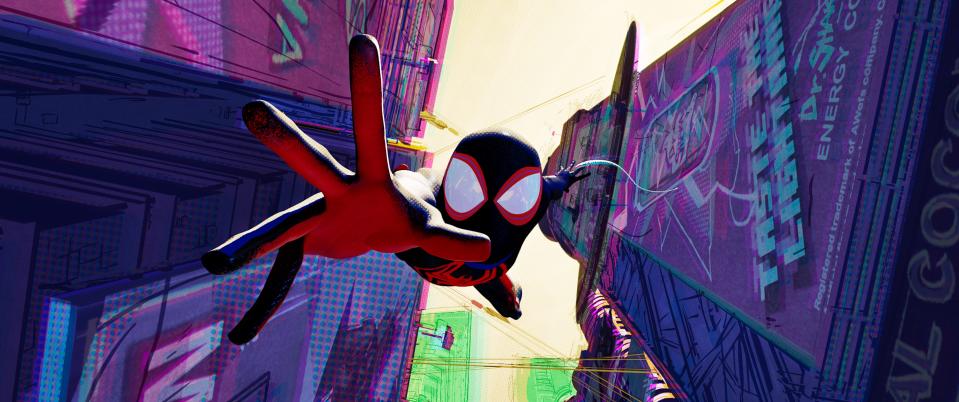
But that means Marvel doesn’t need to make radical changes in order to tell superhero stories that have meaning again; they just have to follow those individual stories and embrace the fact that different characters are going to need to pull from different genres, visual presentations, and tones. Not to start in about how much better the “Spider-Verse” films are at being superhero movies, but you don’t need to lean so heavily on crossovers and fan references when you embrace a visual and tonal ethos that matches (and then challenges) your hero. Even when you’re doing something as more serious drama — hi, “Andor” — then just commit to doing that and having it look and feel distinct. “Iron Man 3” got to feel like a Shane Black movie and it was fun to see RDJ and Don Cheadle hiding behind shipping crates (with handguns!) and being investigators. “Winter Soldier” is as much a spy thriller as it is a vehicle for Bucky fanfic. But it seems like Nia DeCosta (and, Lord knows, Chloé Zhao) have not been given the same freedom to tell different kinds of stories. Let Kamala Khan and Kate Bishop do their own funny, charming, visually playful thing in “Young Avengers,” y’all. I promise it can’t be worse than “Quantumania.”
ALISON FOREMAN: The “superhero movie” has become a bonafide action genre thanks to the box office. But I am begging Kevin Feige to remember that these characters are characters — and more quality time with them outside of intergalactic treasure hunts and poorly rendered CGI battles would go a long way toward making audiences care about their futures.
As Sarah pointed out, the formulaic mission structure Marvel has been clinging to for more than 15 years is a choice, not a requirement. After the assembly of the Infinity Gauntlet, I have watched enough mystical artifact explanations to last a lifetime and I deeply long for the days of six buddies trying shawarma during the post-credits. From Ms. Marvel’s Quantum Bands to Shang-Chi’s ten mystical rings, the never-ending quest to keep super-powerful objects away from villains who want to do bad things with them just can’t compete with the human moments that make the old MCU memorable. Hulk in a sweater and glasses. Ant-Man working at Baskin Robbins. Our nation embracing the patriotism of America’s Ass. Those were the days!
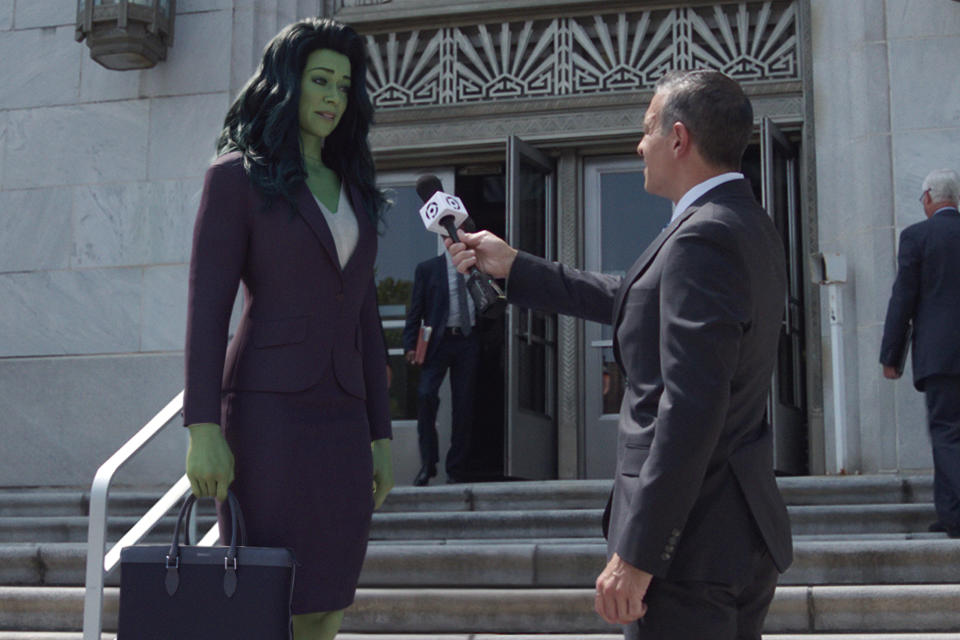
The never-ending cyclical mission structure that propels the MCU is beyond dead. The episodic format has helped the TV shows shake things up, but “WandaVision,” “She-Hulk: Attorney at Law,” and “Ms. Marvel” managed to succeed because they gave us more complete looks into the personal lives of Marvel’s heroes. That genre exploration is being pushed to the extreme on shows like Amazon’s “The Boys,” which is using its adult target audience as an excuse to get into the nitty-gritty of toxic workplaces, superhero sex, and more.
The Marvel movies can and, for ticket sales probably should, stay family friendly. But there’s plenty of the MCU to explore when millions of lives aren’t on the line. Make whole movies out of the rushed character introductions in flops like “The Eternals”; more time with Kumail slaying Bollywood, please! Throw away “The Marvels” genocide plot and just give me “Hotel for Dogs” with baby Flerkens, thanks! Three “Spider-Man” standalones in and I’m still asking, Peter Parker and Mary Jane intimate relationship drama when?
If you’re trying to see the whole Marvel forest, then it can be easy to miss the Avengers trees. Still, quality quiet time is what makes fictional people feel real — and in Phase Five, I don’t believe a single one of these characters exists when their stories end. In a classic example of doing more with less, the MCU would do well to lower the stakes and focus on a world that doesn’t always need saving.
DAVID EHRLICH: Listen. You do not, under any circumstances, gotta hand it to Thanos. We (temporarily) lost a lot of good, very attractive people when that wrinkled purple space farmer snapped his fingers and made all of the MCU’s second-tier characters disappear for a couple of hours, and it’s not as if the character’s motivations for doing were particularly nuanced or interesting; everything that made my comic-literate friends’ faces light up with excitement when I first asked them about Thanos’ whole deal was lost in translation on his trip to the big screen. But that simplicity also worked in favor of a mega-franchise that needed someone to hold three entire “phases” of films together from the shadows — someone whose purpose didn’t need to be complicated because it was undeniably immense.
Thanos’ gravity and inevitability allowed Marvel movies to feel organically interconnected in a way that felt epic, and not, you know, like homework that people have to do because someone at Disney decided to (permanently?) dilute its most popular brand in order to goose the corporation’s stock price for a year or two. He let superfans get off on the feeling that Kevin Feige was playing four-dimensional chess, he gave permission to Marvel to tell reasonably self-contained stories while the big picture came into view, and he gave casual viewers permission to skip a movie or two without fear of missing out on the eventual payoff.
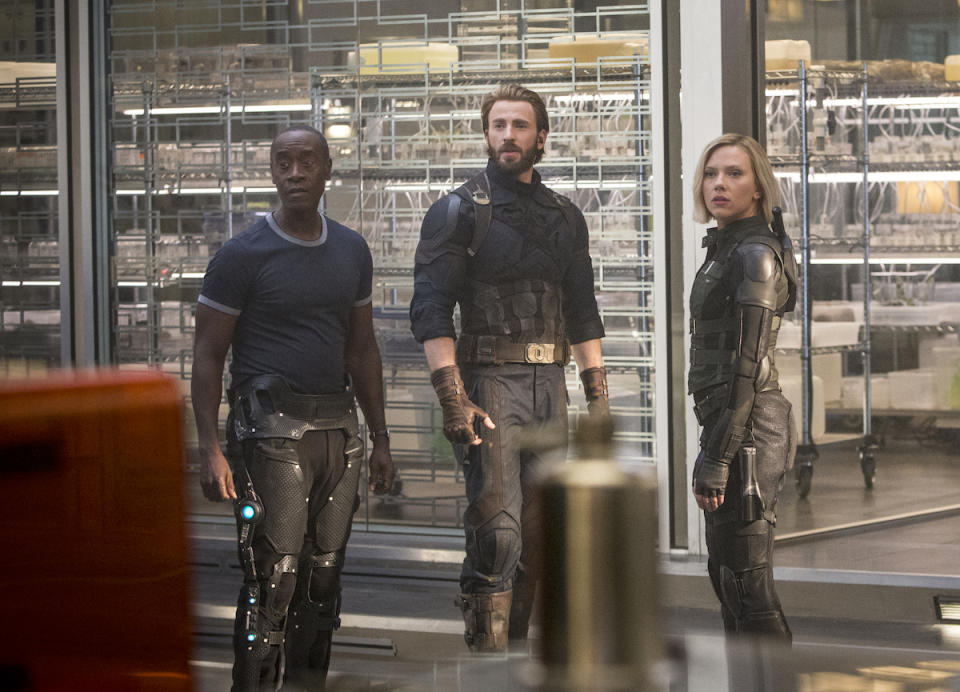
In other words, Thanos is exactly what Nia DaCosta could’ve used to help ground all of the fun and inspired elements that she plays with in “The Marvels” (the all-singing planet was the best thing any of these movies has done in years), and — more importantly — what she could’ve used to help braid the impossible number of threads her movie was tasked with tying together. If Marvel hadn’t been so weirdly derelict about introducing a new big bad into the post-Thanos universe, maybe Dar-Been might have been allowed to be an actual character, and not just an off-the-rack antagonist. Maybe not. Carol Danvers would still probably have been the least compelling superhero in the entire multiverse. But the feeling of interstitiality that plagues this movie would definitely have been alleviated if there were a character — even an off-screen character — who contextualized its mad scramble of events.
Kang isn’t in a good position for several reasons, but that could work in Marvel’s favor as well: Cancel all of the movies that have been announced (even “Deadpool 3,” just for me), and go back to the drawing board. Thanos was bad, but someone is always worse. The MCU needs to find them while it still has a fighting chance.
Best of IndieWire
Where to Watch This Week's New Movies, from 'The Marvels' and 'Dream Scenario' to 'The Killer'
The Best Thrillers Streaming on Netflix in November, from 'Fair Play' to 'Emily the Criminal'
Sofia Coppola Movies, Ranked: 'Priscilla,' 'The Virgin Suicides,' 'Marie Antoinette,' and More
Sign up for Indiewire's Newsletter. For the latest news, follow us on Facebook, Twitter, and Instagram.

